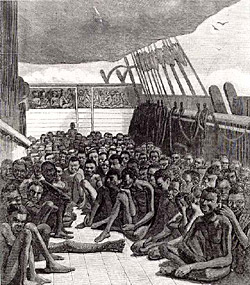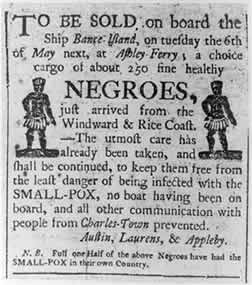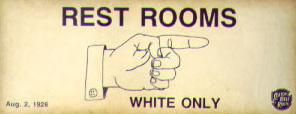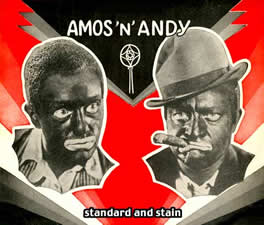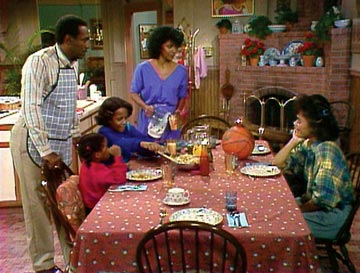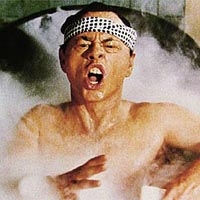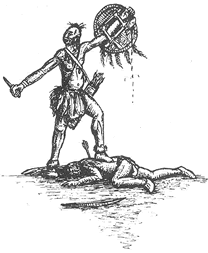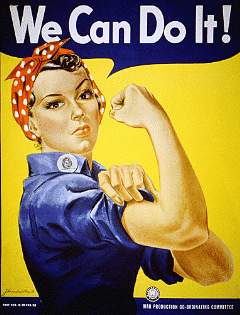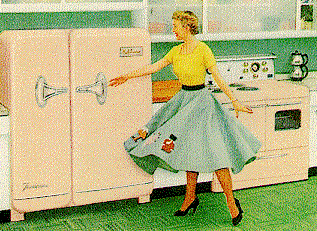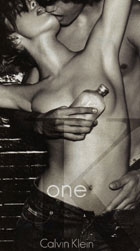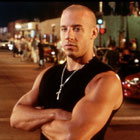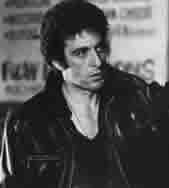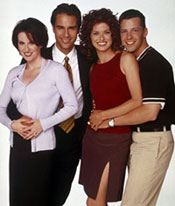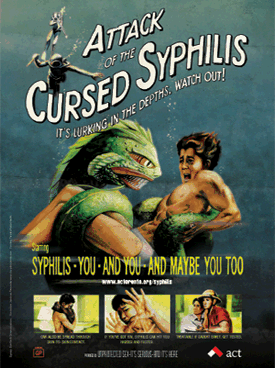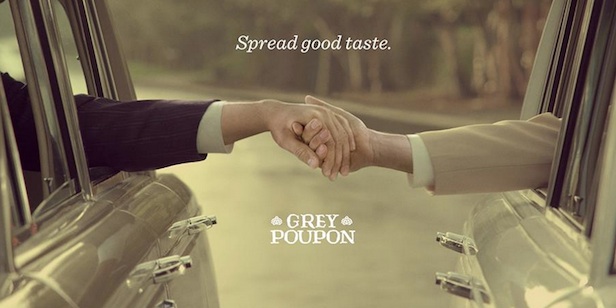
Pictorial Stereotypes in the Media
Pictures affect a viewer emotionally. When a picture shows one particular view of a person, that can lead to a stereotypical idea that may come to represent an entire category of people. These pictures can remain in a person's mind for a lifetime. When pictures are represented time and time again they become part of culture
Communication is easier amongst members of a group who share the same background and use the same language and pictures/symbols. Differences in background can cause trouble in communication
| Culture |
|
| Attitudes |
|
| Dominant Culture |
|
| Selectivity |
|
| Acculturation |
|
| Enculturation |
|
Media Coverage
Do journalists act as independents or a just another member of the herd?
| Pack Journalism | Pack journalism is journalism that is practiced by reporters in a group and that is marked by uniformity of news coverage and lack of original thought-the reporting becomes homogeneous, especially when a group of reporters covering the same topic are required to spend large amounts of time together.
Pack journalism occurs because the reporters are often reliant on one another for news tips or are all similarly dependent on a single source for access (which is quite often the very person they are covering). A type of groupthink occurs, as the journalists are constantly aware of what each other are reporting and an informal consensus emerges on what is newsworthy. The term can also be applied to entire news organizations. For example, pack journalism can occur when a news organization decides to make a particular story the lead story only because other news organizations are doing so. (source: wikipedia) "Stories that challenge conventional wisdom or present discordant perspectives will receive less attention, and may be buried in a newspaper or appear late in a broadcast. Further, the practice of pack journalism may mean some stories don't get covered at all" (source Newswatch Canada http://www.sfu.ca/cmns/research/newswatch/pcc/pack.html |
There is an old saying, "If it bleeds it leads" that applies to the media. Viewers are over exposed to negative events through the media. For example, we turn on the news and the first thing we hear is murder or something bad. We come to believe that we live in a violent area.
Our ideas about what goes on around us is distorted. When we see minority groups portrayed in the media, we more often see the negative story more than the positive ones
Many who work in the media are from non minority backgrounds see http://suite101.com/article/are-there-enough-images-of-minorities-in-the-us-media-a320393 and http://www.prwatch.org/node/3916
The dominant culture in any country controls the media and what is seen. However, with more and more social media, everyday people are able to contribute to what is seen and known. The everyday person now can make a difference in a positive way by sharing truth or a negative way if the substance of what is being shared is inaccurate or fake.
Fake News and the Post-Truth Era- Truth Under Attack
In the aftermath of the 2016 American election, many have written about the rise of fake news and how it may have influenced the election result. We have seen and heard discussions about a Post Truth Era where facts are less important than personal belief. It seems we are experiencing an assault on truth.
The Oxford dictionaries declared "post-truth" the word of the year for 2016.
"After much discussion, debate, and research, the Oxford Dictionaries Word of the Year 2016 is post-truth – an adjective defined as ‘relating to or denoting circumstances in which objective facts are less influential in shaping public opinion than appeals to emotion and personal belief’.The concept of post-truth has been in existence for the past decade, but Oxford Dictionaries has seen a spike in frequency this year in the context of the EU referendum in the United Kingdom and the presidential election in the United States. It has also become associated with a particular noun, in the phrase post-truth politics. " (See this https://en.oxforddictionaries.com/word-of-the-year/word-of-the-year-2016)
In 2017, readers and viewers of media have seen the US President blast that most mainstream media is "fake news." But is it? If someone disagrees with what you are reporting, does that make it fake? What is the goal of the media in reporting on political leaders? Is it to blindly agree to everything that a leader says or is it to always question what is being presented?
In November of 2016, Canadian journalist for Buzz Feed, Craig Silverman wrote about the phenomenon of fake news. He exposed the fraudulent news that was being spread on sites like facebook. What he specifically was reporting on were stories that were completely made up and how easily they spread and were consumed by those who got their news from sites like facebook. Because the term "fake news" has been exploited by critics of mainstream media, Silverman now says, "I think the term fake news has almost been rendered meaningless at this point."
Kathy English the Public Editor for the Toronto Star writes that the Star now is seeing emails and posts where media critics are hurling the insult at the Toronto Star. In her article "The Facts on 'Fake News"of February 18, 2017, she clarifies what fake news is according to Craig Silverman. To fulfill the requirements of fake, it would have three criteria:
- "It has to be 100% false, not a news article or partisan site that gets a few facts wrong"
- "It has to be created consciously to be false"
- "There has to be an economic motive"
English, ends her article with this,
"Indeed. I have yet to see any validity in any of the "fake news" charges lobbed our way. While it goes without saying, I think it is safe to say, the Toronto Star is not in the business of fake news. While this news organization's work does sometimes fall short of its own journalistic standards, to suggest that the Star would deliberately publish false information is wrong. We don't make stuff up. And that's a fact." (Toronto Star Feb 17, 2017)
What we as citizens are left with is that ultimately it is our responsibility to critically analyze what ever images and stories we see or read. We can't just accept whatever we see as true; we are right to question. On the other hand, we cannot dismiss all legitimate media as lies. Finding truth isn't always easy.
Test your self. Can you distinguish real news vs fake news? Try Factitious to see.
Missing White Women Syndrome
We see obsessive coverage in the US of young white girls/women who are missing or abducted
Natalee Holloway |
Jennifer Willbanks The Runaway Bride |
It has been dubbed "Missing white woman syndrome" or "missing pretty girl syndrome", by some media critics-where excessive media hype and coverage is devoted to a specific missing white woman or girl, while virtually ignoring missing men, non-white women, or other news stories. (see https://en.wikipedia.org/wiki/Missing_white_woman_syndrome)
"A damsel must be white. This requirement is nonnegotiable. It helps if her frame is of dimensions that breathless cable television reporters can credibly describe as "petite," and it also helps if she's the kind of woman who wouldn't really mind being called "petite," a woman with a good deal of princess in her personality. She must be attractive -- also nonnegotiable. Her economic status should be middle class or higher, but an exception can be made in the case of wartime." Eugene Robinson, Washington Post http://www.washingtonpost.com/wp-dyn/content/article/2005/06/09/AR2005060901729.html
in the US half of the people who go missing are not white, A 2010 academic study, reports that 80% of the news coverage about missing children is about victims who are not black, only 205 of the coverage is about those who are black. See a video detailing the issue https://www.youtube.com/watch?v=3YWw5X1rkTQ
In Canada a study published in The Law and Society Association, showed that aboriginal women who go missing in Canada get 27 times less news coverage than white women; and they receive "dispassionate and less-detailed, headlines, articles, and images. ( see Gilchrist, Kristen in sources)
" According to StatsCan, First Nations women are three and half times more likely to be victims of violence than non-aboriginal women and seven times more likely to be murdered. It is a shameful record, a product of a complex web of factors: historical, cultural, social, political. “Systemic bias” is how B.C.’s Missing Women Commission of Inquiry chief Wally Oppal described the problem in his 1,448-page report, “Forsaken,” last December. (2013)" (Zerbisias, A "Three Women. Three Deaths", Toronto Star, p.IN1, Jan 19, 2014)
Important Terms:
| Prejudice |
|
| Discrimination |
|
| Racism |
|
| Stereotype |
|
Prejudice is based on the idea that one group is somehow better than another (mentally, physically, socially, etc.)
Historically dominant cultures have discriminated against various ethnic or other groups- some groups have been able to overcome, most not
Take the Quiz
African American/ Black Stereotypes
Africans of the Slavebark "Wildfire" 1860 read more http://www.sonofthesouth.net/
|
Amos & Andy -in blackface
The Cosby's- a wealthy lifestyle see Racist cartoons at Ferris University Jim Crow site http://www.ferris.edu/jimcrow/cartoons/ |
Andy Rooney as Asian stereotype
|
Other Minority Stereotyping
|
Aboriginal/Indigenous Stereotyping
Indigenous people have been stereotyped in words and images for hundreds of years. Film, television and comic-book producers have perpetuated these stereotypes over several generations
Stereotype images-Little Big Man); the drunk (Tom Sawyer); the Indian princess (Pocahontas); the loyal sidekick (Tonto)—these images have become ingrained in the consciousness of every North American. Indigenous people are seen as primitive, violent and deceptive or else as passive and full of childlike obedience.
We see romanticized views -an Indian Princess (lured from her tribe to the white world), the Native Warrior (fierce and formidable and a threat to civilized society and white women)and the Noble Savage (Elevated to a sphere of goodness unreachable by those in contaminated white society and usually possessing some spiritual connection to the land. Indigenous people who were seen as savages were even portrayed by other nationalities with darker skin
in1980s and 1990s, CBC improved the portrayals of Aboriginal people in its television dramas. Spirit Bay, The Beachcombers, North of 60 and The Rez using Indigenous actors with real lives in identifiable parts of the country. The shows were successful in having and non indigenous audiences
MASCOTS
Sports teams continue to use indigenous symbols as mascots- Washington Redskins, Chief Wahoo of the Cleveland Indians, The Atlanta Braves and their tomahawk chop- some school in the US are removing their indigenous mascots, but change is slow. Read about sports mascots controversy http://inamerica.blogs.cnn.com/2013/04/04/native-american-mascots-pride-or-prejudice/
Coverage of Indigenous people in the news media centres on political and constitutional issues,land disputes, forest fires, poverty and substance or sexual abuse
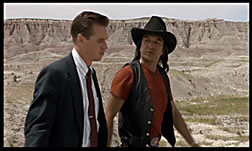
Thunderheart the noble savage/ Atlanta Braves Chief Wahoo
Female Stereotypes
|
|
Male Stereotype
|
|
Cruising 1980 A serial killer brutally slays and dismembers several gay men in New York's S&M and leather districts.
ACT Poster 2010
|
Lesbian, Gay, Bisexual, Transgender Stereotypes
|
As Irshad Manji, a Toronto-based journalist, has said, "We need more than different faces and different experiences to combat racism. We need people - people of all backgrounds - with an anti-racist understanding and a commitment to being vocal about it."
Breaking Barriers- Heineken Experiment
__________________________________________________________________________________
Sources/ Resources
Visual Communication: Images with Messages by Paul Martin Lester
Pack Journalism https://en.wikipedia.org/wiki/Pack_Journalism
Pack journalism Newswatch Canada http://www.sfu.ca/cmns/research/newswatch/pcc/pack.html
Are There Enough Images of Minorities in the US Media? Suite101 http://suite101.com/article/are-there-enough-images-of-minorities-in-the-us-media-a320393
Missing White woman syndrome http://en.wikipedia.org/wiki/Missing_white_woman_syndrome
Missing White Women Syndrome - does it really exist? Truthloader, YouTube https://www.youtube.com/watch?v=3YWw5X1rkTQ
(White) Women we Love Washington Post Friday, June 10, 2005 http://www.washingtonpost.com/wp-dyn/content/article/2005/06/09/AR2005060901729.html
Gilchrist, Kristen (May 27, 2008). "Invisible Victims: Disparity in Print-News Media Coverage of Missing/Murdered Aboriginal and White Women"
Min, Seong-Jae and Feaster, J.C. (2010) Missing Children in NationalNews Coverage: Racial andGender Representations of Missing Children Cases http://academia.edu/857391/Missing_Children_in_National_News_Coverage_Racial_and_Gender_Representations_of_Missing_Children_Cases
Mckelvey,Tara (May 9, 2013) Cleveland Abductions: Do Whute Victims Get More Attention?, BBC http://www.bbc.co.uk/news/magazine-22441124
Barton, Robin. ( August 2011) The "Missing White Woman Syndrome" The Crime Report http://www.thecrimereport.org/viewpoints/robin-barton/2011-08-the-missing-white-woman-syndrome
Missing: News coverage of Communities of Color http://www.prwatch.org/node/3916
If you're missing it helps to be white http://www.msnbc.msn.com/id/5325808/&e=7507
Understanding prejudice http://www.understandingprejudice.org/
The Definition and meaning of Prejudice http://faculty.ncwc.edu/toconnor/soc/355lect01.htm
JIm Crow Museum of Racist Memorabilia http://www.ferris.edu/htmls/news/jimcrow/
Jin Crow propaganda http://www.prwatch.org/node/4005/print
African Slave Ship http://www.sonofthesouth.net/slavery/african-slave-ship.htm
Locke and slavery http://oregonstate.edu/instruct/phl302/distance_arc/locke/locke-slavery-lec.html
Ethnic and Visible Minorities Media Awareness http://www.media-awareness.ca/english/issues/stereotyping/ethnics_and_minorities/index.cfm
Media Awareness Female stereotypes in alcohol ads http://www.media-awareness.ca/english/resources/educational/overheads/alcohol/female_stereotypes_alcohol.cfm
Media Awareness Girls and Women stereotyping http://www.media-awareness.ca/english/issues/stereotyping/women_and_girls/index.cfm
Dying to be Thin http://www.pbs.org/wgbh/nova/thin/
Women in Media About Face http://www.about-face.org/
Roles in the 50s http://history-and-film.tripod.com/roles.html
Gender ads http://www.genderads.com/
Asian Stereotypes http://www.tipatat.com/artworks/stereotypes/
National Coalition on racism in Sports and Media http://www.aimovement.org/ncrsm/
Court TV Chief Wahoo http://www.courttv.com/archive/trials/wahoo/history.html
Sport Mascot Controversy http://www.courttv.com/archive/trials/wahoo/mascotchart.html
Stereotype of the Month http://www.bluecorncomics.com/stype02.htm
Media and Minorities in a Multicultural Society http://www.media-awareness.ca/english/resources/articles/diversity/media_minorities.cfm
Canadian Race Relations Racist Discourse in Canada's print Media http://www.crr.ca/Load.do?section=26&subSection=38&id=322&type=2
Equality Today Org http://www.equalitytoday.org/intro.htm
Media Watch http://www.mediawatch.com/welcome.html
Pink Dollar Marketing and Queer Representation in Advertsing, Media Smarts
Hall of Shame Ads http://www.mediawatch.com/gallery/ads
No more dumb old dad: Changing the bumbling father stereotype http://www.cnn.com/2012/06/12/living/dumb-dad-stereotype
Research: Men Respond Negatively to Depictions of "ideal Masculinity" in ads, (August 2012)
http://news.illinois.edu/news/12/0801advertisingmasculinity_CeleOtnes.html
Barnard, Linda.(June 28, 2013.) How graphics, sex and humour saved lives Toronto Sta, page L1
Elliott, Stuart. (June 25, 2013) Commercials with a Gay Emphasis Are Moving to Mainstream Media
Wolford, Josh. (June 25, 2013) Grey Poupon's Gay Pride Support Prompts Predicatable Facebook Flame War
Zerbisias, A. (Jan 19, 2014)."Three Women. Three Deaths", Toronto Star, p.IN1,


